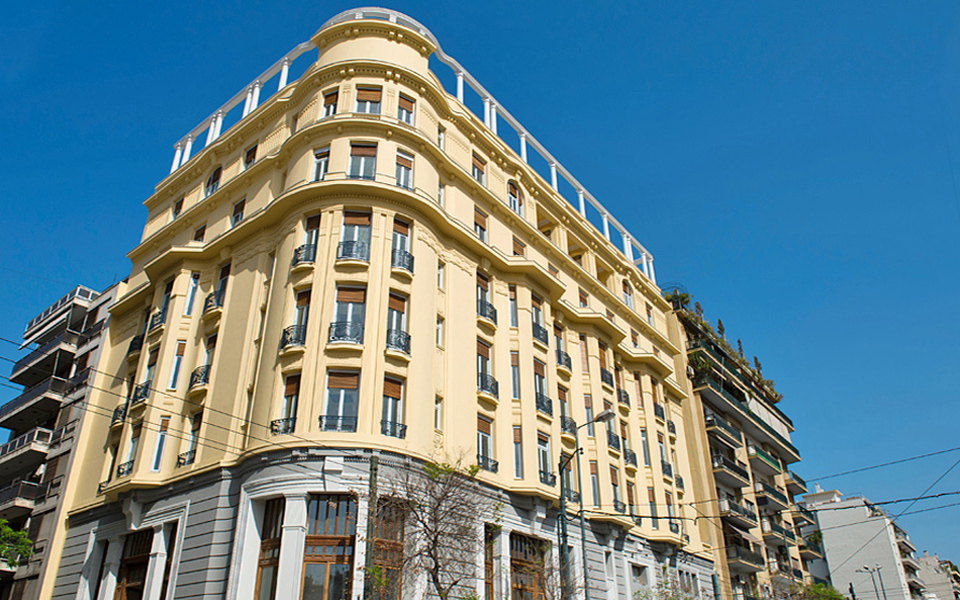On the corner of Patission and Averof streets – one of the most neglected parts of Athens – cement mixers buzz while workers pave the sidewalk. Abandoned for three decades, the imposing Acropole Palace stood like a ghost on the once-bustling Patission street. But now, from the freshly-painted ochre facade to its elaborate interiors, this historic hotel is giving the neighborhood a touch of bygone elegance.
In its heyday, the Acropole was one of the grandest hotels in Athens, boasting stained glass windows, brilliant chandeliers, elaborate mahogany furniture, and a ballroom where the rich and famous danced deep into the night.
Built between 1926 and 1928 and designed by Sotiris Magiasi – a promising architect trained in Paris – it reflects the fine, Greek version of art nouveau. (At the international conference of UNESCO in Vienna in 1990, it was ranked among the most important samples of art-nouveau architecture in Europe).
“In its heyday, the Acropole was one of the grandest hotels in Athens, boasting brilliant chandeliers and a ballroom where the rich and famous danced deep into the night.”
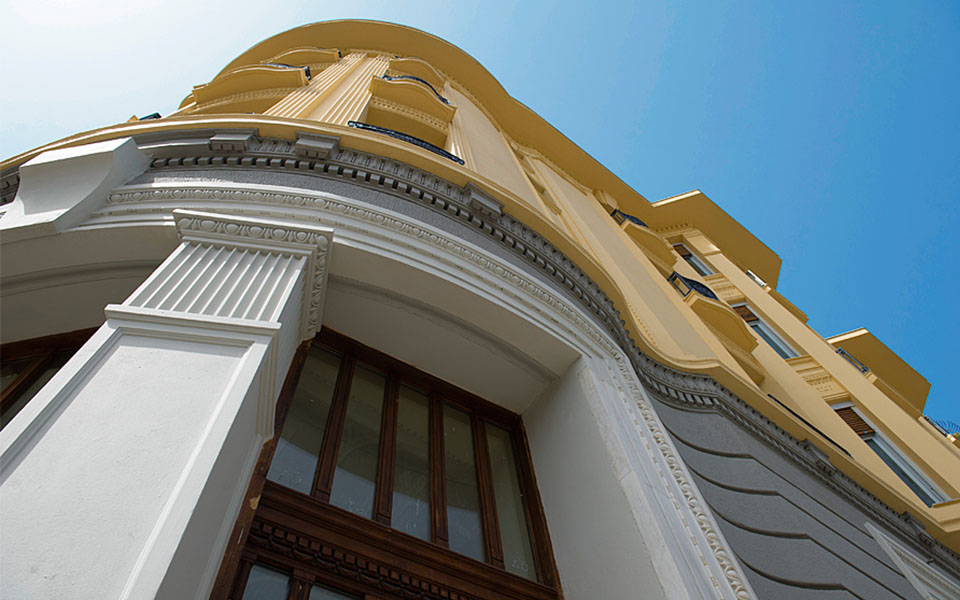
© Vangelis Zavos
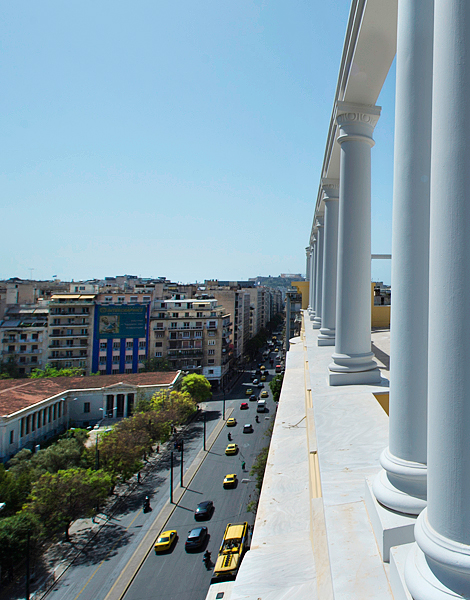
© Vangelis Zavos
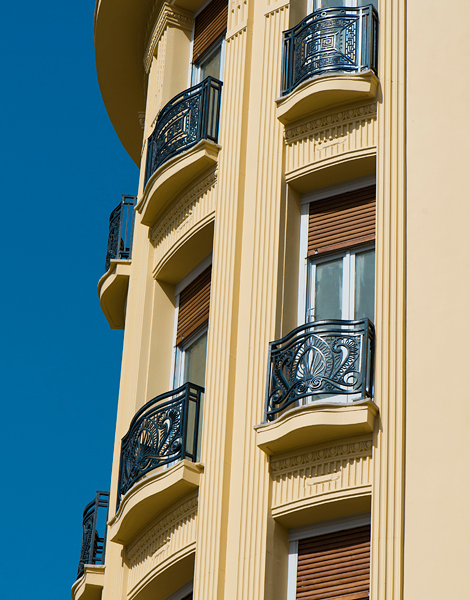
© Vangelis Zavos
Seven steps lead to the seven-storied building, rising 34 meters high. Its total area is 6,500 square meters, made up of a large basement hall, a spacious ground floor, a mezzanine, and five top floors. In the basement during the 60s, one would find one of the hippest night clubs in the city. Legendary musicians George Mouzakis played the trumpet, Takis Morakis the violin, and in 1963 Vangelis Papathanasiou with the group Formix gave rise to what was later called ‘Greek rock’.
The Acropole operated 107 rooms with 173 beds for 60 years, and bore witness to most of the events taking place in the troubled history of the city: wars, civil strife, the rise of an Athenian urban class, cosmopolitan parties and feasts, and the military junta (the harrowing footage of the bloody Polytechnic uprising was filmed from its balconies).
In 1991, the building was declared a listed building, after which it was abandoned as a result of repeated lawsuits that wasted a lot of public money. Its damage was further exacerbated by extensive looting and fires. Its restoration began again in 2013.
While the construction workers are busy at work and craftsmen come and go, the loud sounds of hip-hop coming from their radios seems incongruous, but pleasantly alive. They have managed to reproduce the old elaborate ceiling using plaster, and the internal balcony – where musicians played over the long double parlor – has been restored in its original design. The decoration on the railings in masterful, intricately stretching across the room, meeting at a harp design in the center.
Equally elaborate, like an elegant pendant, is the circular gallery of the Athenian salon. There, a final polish is being given to the floor under the awestruck eyes of the workers, perhaps unaware of the fact that once, on this very floor, the most fashionable drinks were consumed by guests dancing fervently.
“Acropole bore witness to most of the events taking place in the troubled history of the city: wars, civil strife, the rise of an Athenian urban class, cosmopolitan parties and feasts, and the military junta.”
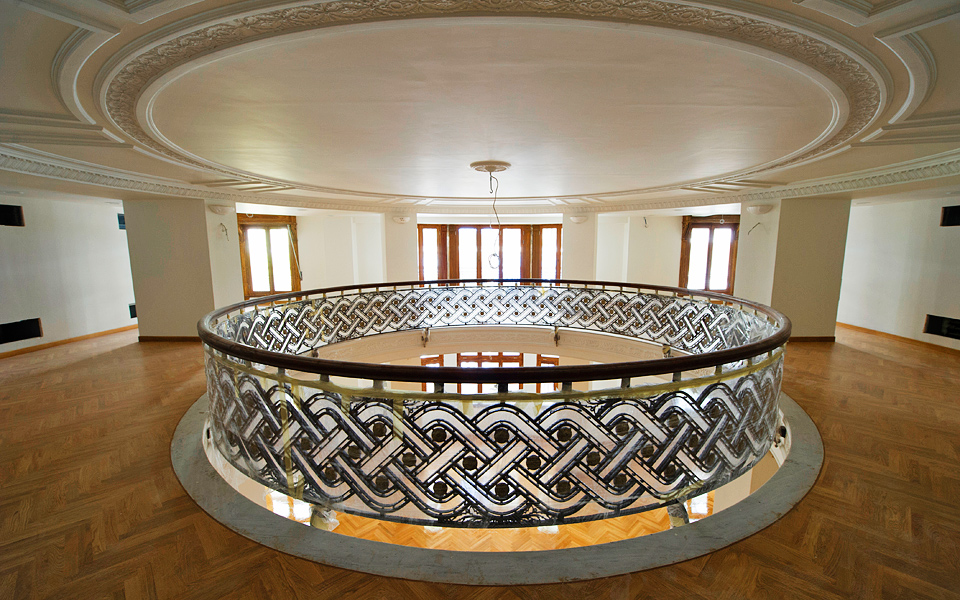
© Vangelis Zavos
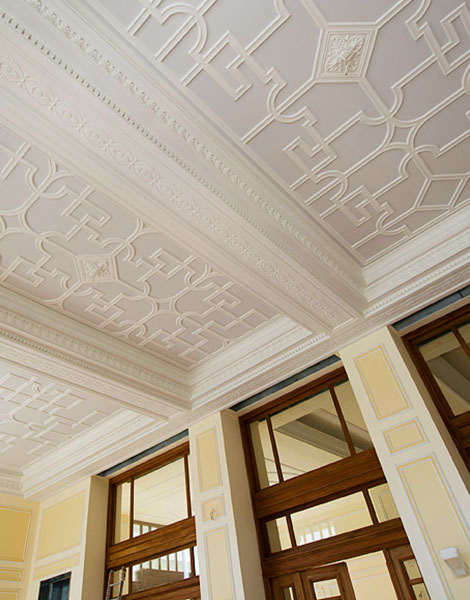
© Vangelis Zavos
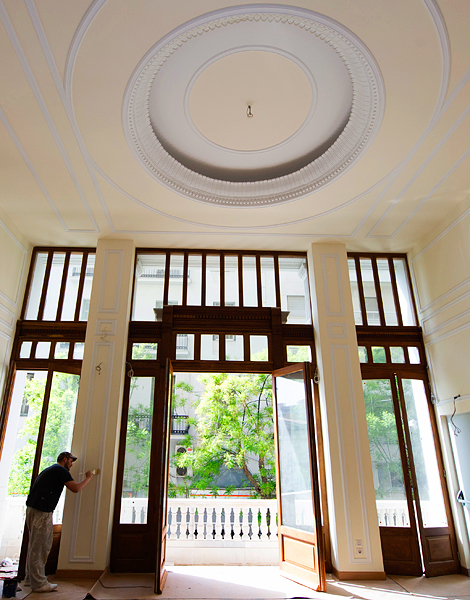
© Vangelis Zavos
On the upper floors, the picture is different. Pieces of the floor mosaic have been removed; the craftsmen have not yet finished their work, and electrical fittings continue. The lower floors might be ready for the summer, but it is unlikely that the upper floors will be complete any time soon. Time, work and, more importantly, funds are needed. “It could act as a news channel to support the cultural world, something similar to what happened with the Bageio foundation during the Athens Biennale and Documenta, or “a space for the ideas of young artists,” says architect Dimitris Zoupas, from his office in the Ministry of Culture.
It’s a difficult ascent to the sixth floor and the loft on the seventh, but the view from the roof garden, which will become the Acropole restaurant, is breathtaking: a huge terrace with a horseshoe bar at its center (a common feature in the finer buildings of the interwar period), offers a breathtaking panorama, from Lycabettus hill and the Acropolis all the way to the Peace and Friendship Stadium near Piraeus, offering a distant view of the sea. A few touches of green appear here and there.
The restaurant won’t operate this summer. The search will soon begin for who will operate the facility. It is one of the many issues that are as of yet unresolved.
Evgenia Gatopoulou, the head of the General Directorate of Restoration, Museums and Technical Works – with years of experience at the Ministry of Culture – believes that the lower grounds could be ready to operate this summer. “In the basement, we will place installations, while the rest is designed for temporary exhibitions,” she says. “On the ground floor, in the old ballroom, a gift shop for the Archaeological Receipts Fund (ARF) will operate, with two entrances; one on Patission and one on Marni streets. On the second floor, in the Athenian salon, various events supported by the Ministry of Culture will be held.”
The restoration has been faced with unexpected delays due to, for example, the fire which caused damage to the building’s exterior,” adds Ms Gatopoulou. “Under the plaster on the facade, we uncovered flimsy surfaces.”
“The view from the roof garden offers a breathtaking panorama, from Lycabettus hill and the Acropolis all the way to the Peace and Friendship Stadium near Piraeus.”
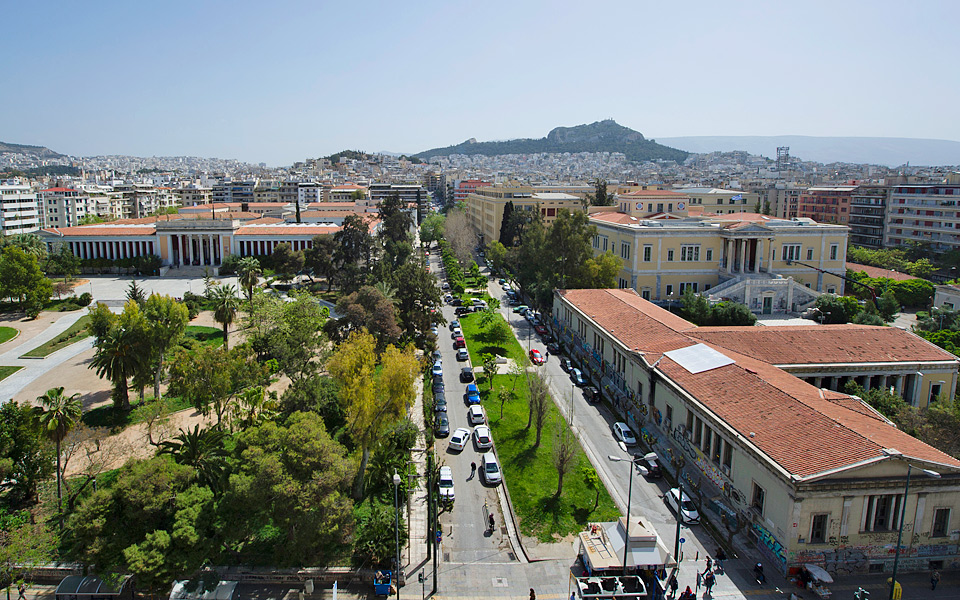
© Vangelis Zavos
Bringing the wooden floors to their original state is another extremely demanding task. The case of the mosaics is similar. “We were forced to remove some of the strips of flooring and mosaics and replace them with new materials. But today, there aren’t many old craftsmen left. We had to find other solutions. This immediately impacted on the budget,” Ms Gatopoulou explains.
Moreover, the one concern on everyone’s minds is this: once the scaffolding comes off, will it be covered in graffiti in no time? Ms Gatopoulou can only think of one solution: “The KELES security system, to which all the museums and archaeological storehouses are connected in the country, is one of the most up-to-date systems. The Acropole Palace could be connected to it, too.”
Pushing aside the many difficulties, the team behind the restoration is hopeful that the Acropole can restore its former glory. Their hope is that when the Acropole begins operating, it will play a key role in developing the neighborhood. The Head of the General Directorate of Restoration thinks so too, referring to the establishment of a cultural quadrangle composed of the Acropole, the National Archaeological Museum, the Athens Polytechnic University and the building of the Ministry of Culture.
“When the Acropole begins operating, it will play a key role in developing the neighborhood.”

